Here in North Carolina, we continue to feel and see the effects of Hurricane Florence on our coast. We are grateful that all our staff are safe, yet aware that the path forward will be challenging.
As the roads and waterways open back up, Audubon staff will be evaluating conditions at the islands, marshes and other sites we manage.
We don’t yet know what we will find and it could be a mixed bag for birds.
Updates from the field here:
Wednesday, October 18
From Coastal Biologist Lindsay Addison:
When Florence barreled into the Cape Fear region’s coastline, it struck North Carolina’s largest concentration of nesting and wintering American Oystercatchers. As soon as it was safe to get back on the water, we not only began to check on how our managed sites fared in the storm (which is what the blog focuses on), we began resighting banded birds. So far we’ve documented 100 oystercatchers on the Cape Fear River that survived the storm—hopeful results. One of these was Dark Green CL8. Banded as a nesting adult this year, CL8 not only survived Florence, she took off to Florida’s Nature Coast where she was seen by Audubon Florida surveyors on October 7. This means now we’re waiting to see if she also survived a sideswipe from Hurricane Michael.
Wednesday, October 10
From Coastal Biologist Lindsay Addison:
Southeastern North Carolina is still recovering from Florence, but at the same time residents and wildlife are also in the sights of Hurricane Michael, which is forecast to impact our area as a tropical storm on Thursday. Tides are still running high in the wake of Florence, and it’s anticipated that the coast will see still more changes as Michael passes through.
Migrating and wintering birds like Sanderlings and Black Skimmers are still at inlets, facing another storm, and so far we’ve resighted about half of the banded Piping Plovers that were known to be present prior to Florence. Our thoughts are with our communities and our birds.
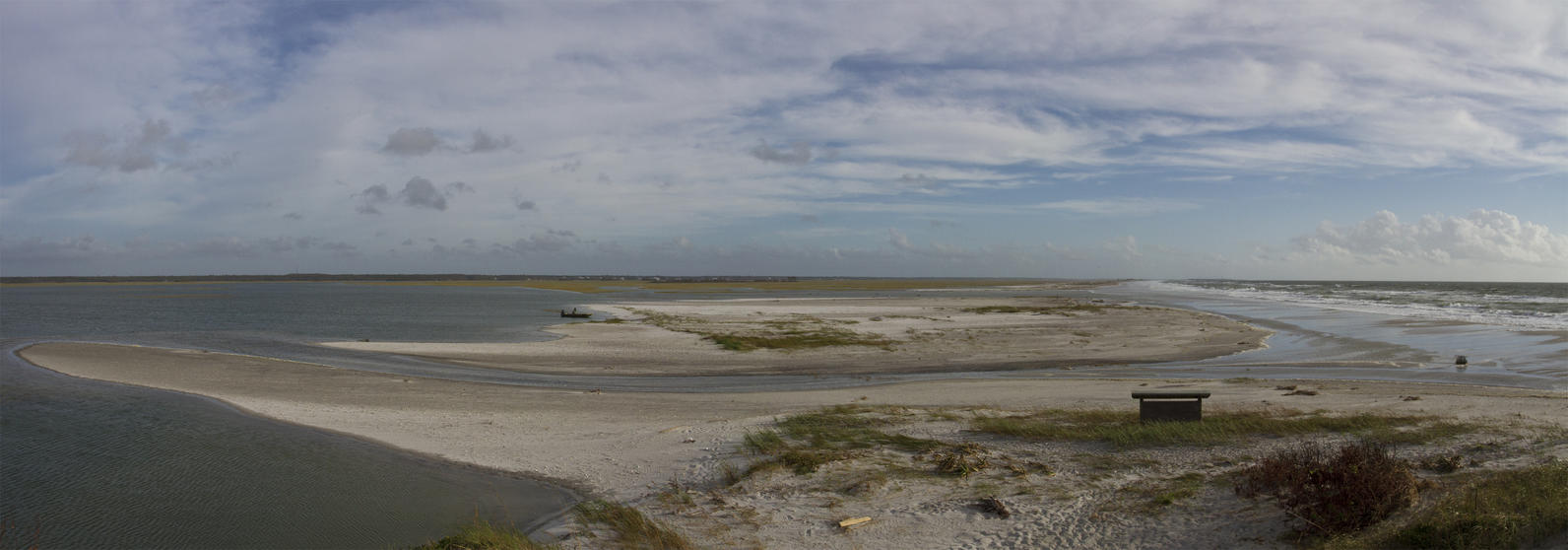
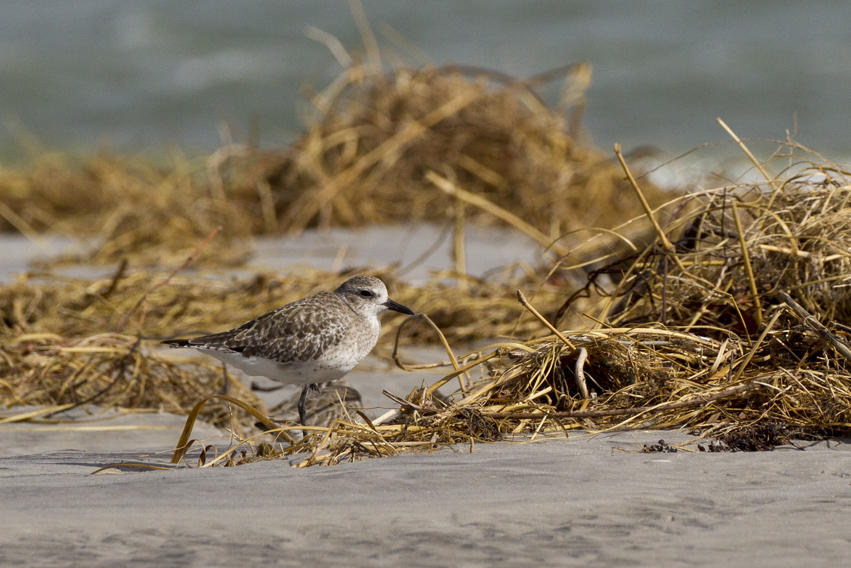
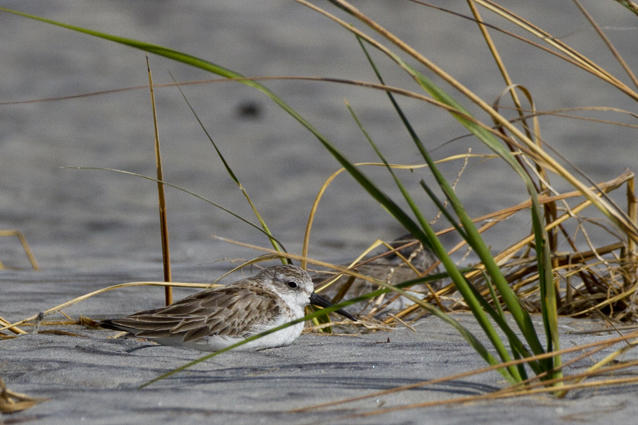
Wednesday, October 3
From Coastal Biologist Lindsay Addison:
Over the last week or so, we have been able to make a few trips down the Cape Fear River to visit our island sanctuaries there. What we found was a mixed bag, but not unexpected. Overall, Florence accelerated the processes that have been impacting nesting habitat on the river.
The storm surge that inundated barrier islands and washed over dunes also overwashed the low-lying marsh islands, lowering the shell rakes that oystercatchers and other species of birds, as well as diamond-back terrapins, use to nest during the spring and summer months.
At Battery Island, trees that were close to the tide line have succumbed to saltwater inundation.
Following Florence, additional Yaupon (the dark green shrubs below) have died back, as can be seen from the brown edging along their bases. The trunks of longer dead eastern red cedar are mixed in throughout.
BELOW: Battery Island’s shoreline shows additional erosion, which is causing the loss of some nesting trees, following the passage of Hurricane Florence.

Meanwhile, on the dredged-material islands, we found additional erosion to their shorelines, but less overall habitat loss, thanks to their elevated domes.
BELOW: Ferry Slip Island (pictured) and South Pelican Island, which are both dredged-material islands, lost some sand during Hurricane Florence, but nesting habitat on them remains.
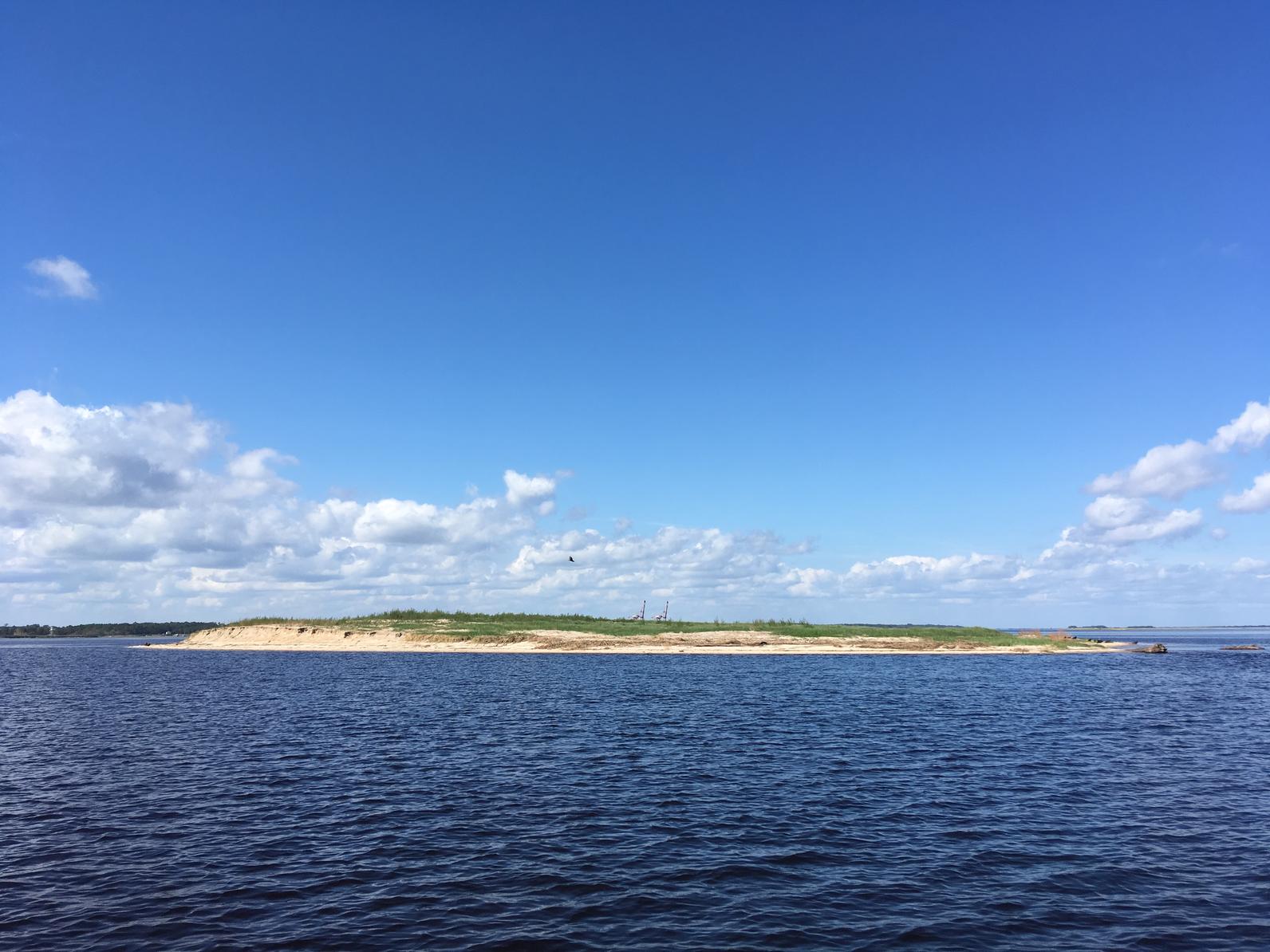
Low levels of dissolved oxygen in the water, and perhaps other unfavorable conditions, contributed to the deaths of oysters and fish. However, flocks of American Oystercatchers remain, and we found over 300 roosting on the river. We’ll continue to resight the flocks through the fall and winter, as always, and resight banded birds—so far we have documented over 70 banded individuals that have survived the storm and that will, we hope, continue to find enough food to survive the winter.
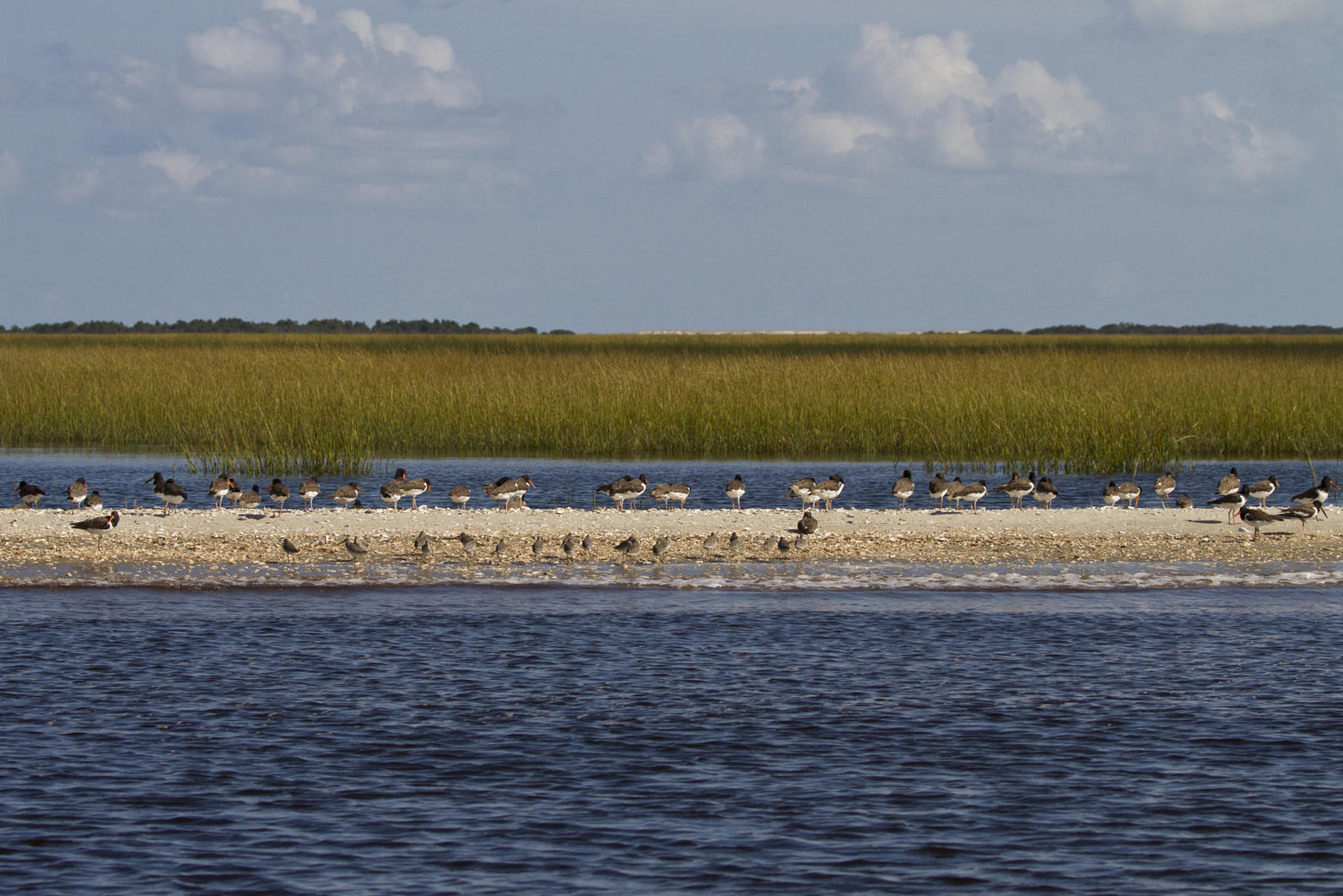
With UNC-W master’s student Anna Zarn we also collected shellfish and sediment samples as part of a food chain study that encompasses the physical environment, shellfish, and oystercatchers. The results of the two-year project which is getting underway this fall will help us understand what levels of heavy-metal contaminants these organisms are exposed to throughout the year—and following storm events like this one.
Finally, one noticeable absence on the river were the large flocks of Brown Pelicans that usually deck the islands throughout the fall: where it’s not unusual to see 1,000-2,000, we only saw 150-200 in early October. Many probably hightailed it out of the area, hopefully avoiding the worst impacts of Florence.
Sunday, September 23
From Coastal Biologist Lindsay Addison:
The north tip of Lea Island at New Topsail Inlet is covered in wrack (dead vegetation—mainly Spartina patens that is washed out of the marsh every time there’s a big high tide or a storm) which is intertwined with all kinds of trash.
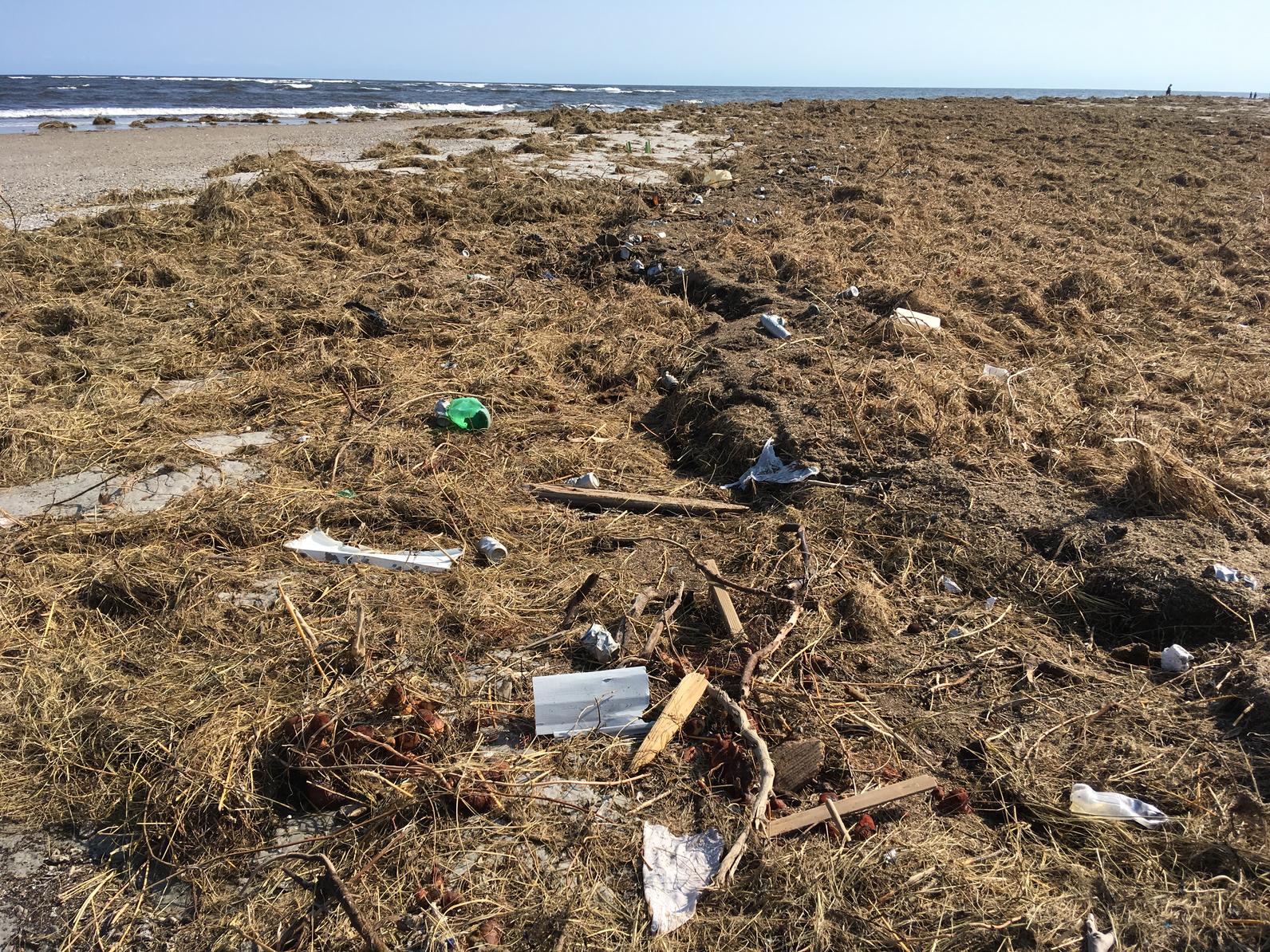
Like Hutaff Island, Lea is also looking like it will be good nesting habitat next year.
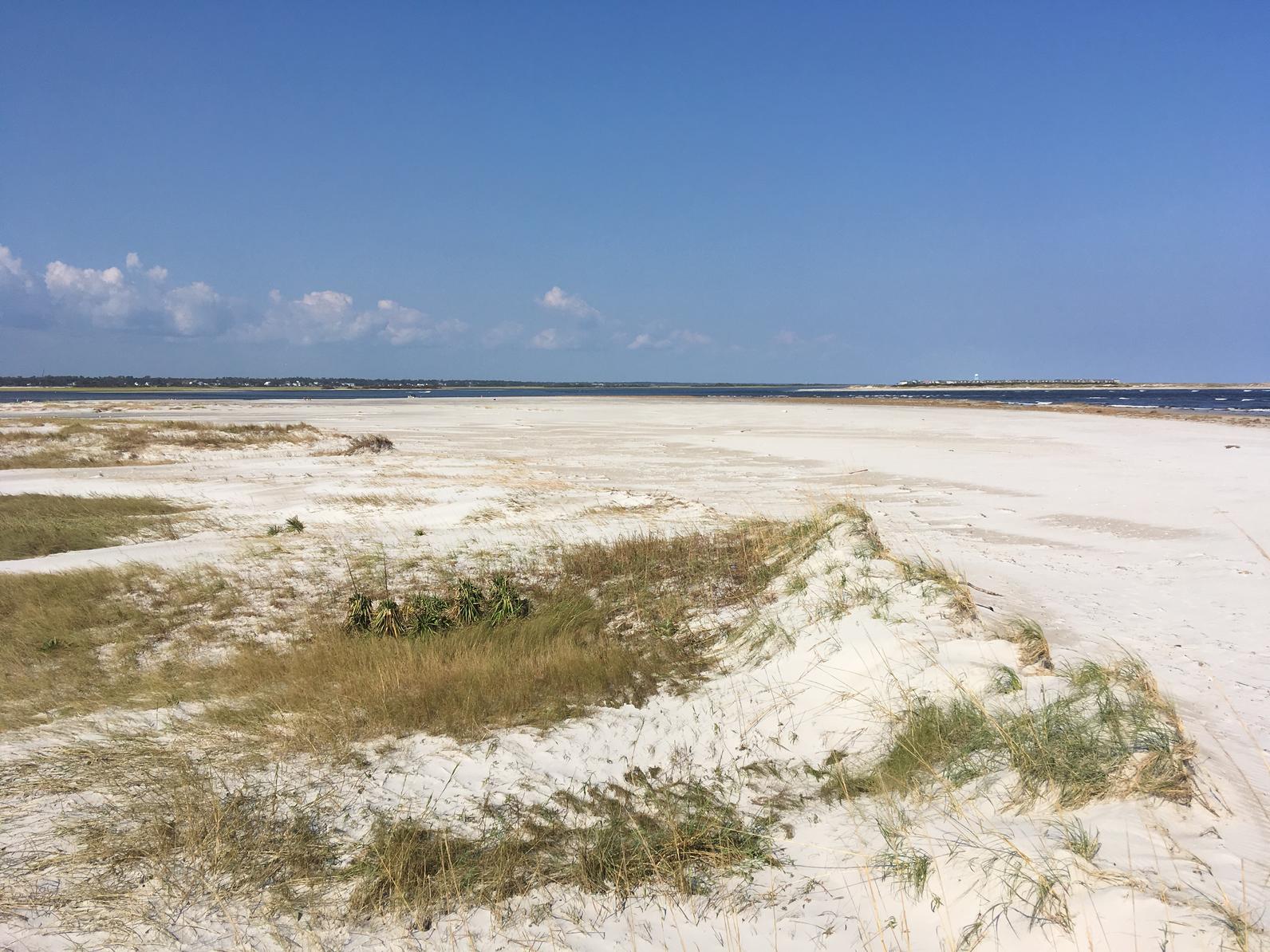
September 21
From Pine Island Sanctuary Director Robbie Fearn:
Just back from the docks – water dropped a full foot Wednesday! Docks did great!
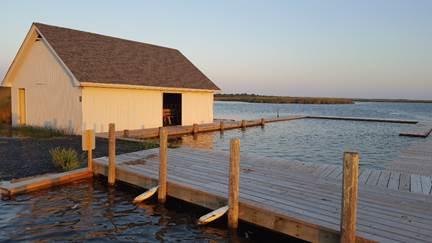
From Coastal Biologist Lindsay Addison:
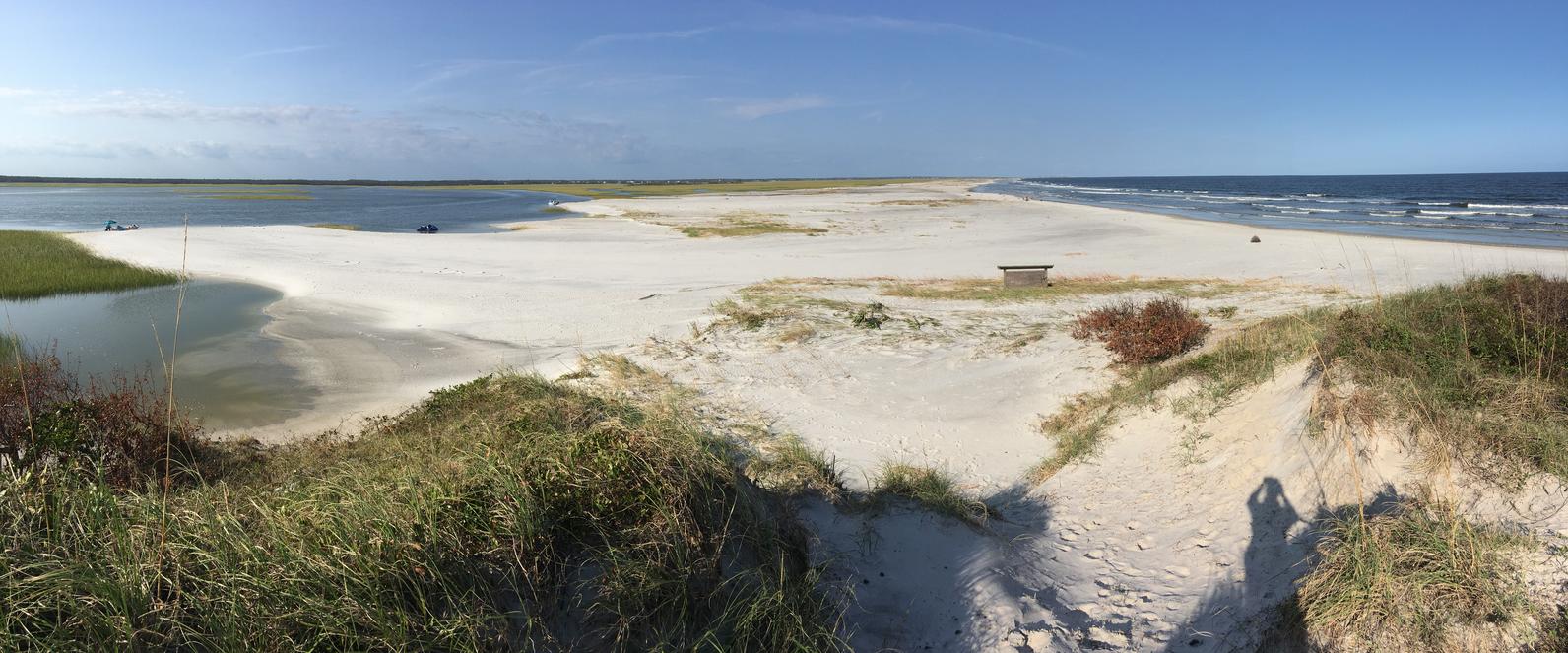
The resulting overwash fans, the wide flat expanses of sand created from the dunes, will be excellent nesting habitat for many bird species next spring, including American Oystercatchers, which are investigating the new landscape, as we can tell by their tracks criss-crossing the island.
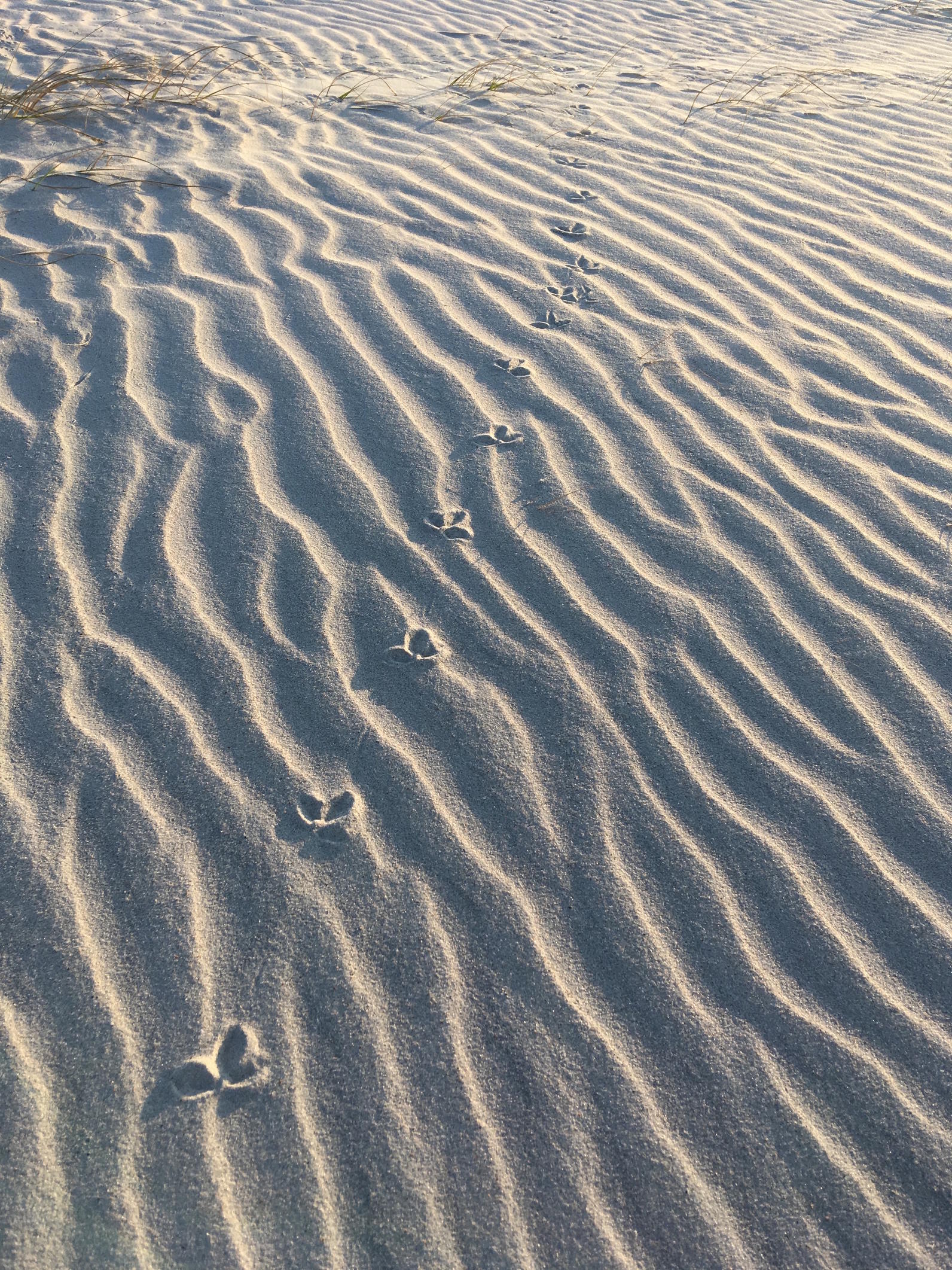
September 20
From Pine Island Sanctuary Director Robbie Fearn:
As I write this, egrets and herons are strolling the edge of the flood waters on the Pine Island Great Lawn, plucking out fish and eels where normally robins chase grasshoppers.
Just as the birds are fortunate, so are we at Pine Island Sanctuary.
Though we must await the receding of the waters to see what damage may or may not have occurred to our docks and boat launch (I expect little to none), in general the storm’s wrath passed us by.
The flood waters on the sound peaked last evening when the wind shifted. They did not make it into any of the buildings on the lawn. Wind and rain were minimal here during the storm, no worse than many a nor’easter. Whew…
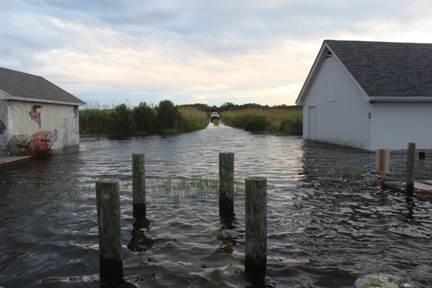
In this storm, the marsh did what marshes are supposed to do … be a sponge, reduce the storm surge. This is one critical reason why we are working to save these marshes, to protect the natural and human infrastructure from storm damage and why we are working to lift and renovate our historic structures so that our site will endure, helping our community and our country to understand, adapt to, and live with the dynamic nature of our ever-changing coast.
Resilient in the face of storms and change, serving as a refuge and birthplace for wildlife and our inspiration to our enduring spirit.
September 19
As Walker Golder, director of Audubon’s Atlantic Flyway Coast Initiative told the Washington Post today, “Birds have been dealing with hurricanes for as long as there have been birds and hurricanes,” And thankfully, most species have already fledged. We will certainly keep you all up to date with what we learn about our birds.
---
Lindsay Addison, coastal biologist for Audubon North Carolina reports that initial National Oceanic and Atmospheric Administration aerial imagery in the wake of the storm shows overwash all along the length of Lea-Hutaff Island.
“Storm surge and overwash are destructive for homes, but for an undeveloped barrier island like Lea-Hutaff, weathering a storm is part of its essential identity. Overwash creates and enhances habitat, though the actual storm can be challenging for birds to weather. For example, Black Skimmers, were forced inland to Leland to find places to roost during Florence. We don’t yet know how our other sanctuary islands fared, and it will take some time to get to all the sites, but we will be assessing them all in the coming weeks.”
September 12 – 17
In support of North and South Carolina, National Audubon Society launched a series of updates from the field, available here.



